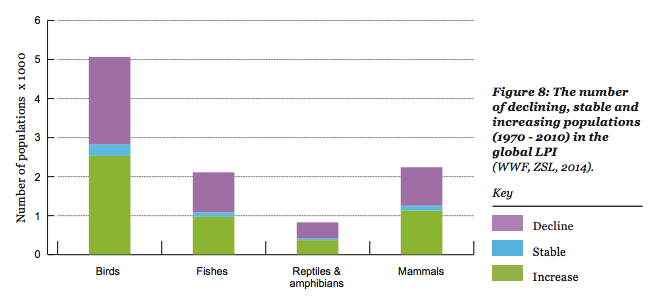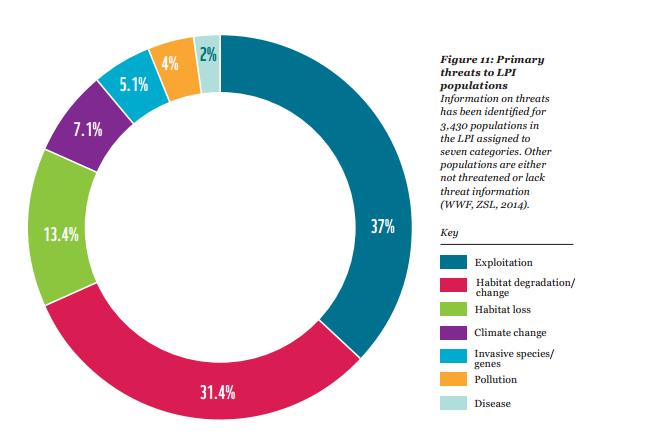The World Wildlife Fund released a stunning report this week: From 1970 to 2010, overall vertebrate animal populations declined by half. Surprise: It’s our fault.
We should clear up one thing: It’s not that half of all species have been made extinct in the past half century. It’s that overall population counts for vertebrate species (besides humans) have declined by half.
Why are population numbers dropping so quickly and drastically? The cringe-worthy primary reasons are exploitation (read: hunting and fishing, 37 percent) and habitat loss (31.4 percent). All of which means we should prepare to say goodbye to more and more amazing animals — like African forest elephants, whose populations have declined by 60 percent since 2002.
The WWF team measured more than 10,000 species over 40 years, and they found an overall declining trend in 52 percent bird, fish, reptile and amphibian, and mammal populations. Of those freshwater fish, frogs, and shorebirds had it the worst:

World Wildlife Fund
Numbers of this magnitude can be pretty hard to grasp while you’re crying. Luckily, the WWF packages them in an easy-to-understand, brightly colored graph form:
In the study, the WWF includes some hundred or so pages of advice on how to save the quickly dying species of the world. Your choices are: 1) donate money to the WWF, or 2) figure out a way to completely change the way the world works ( “redirect financial flows,” “produce better,” create “equitable resource governance”). So for now, it’s probably best to take comfort from the few species that are on the rebound — like the Nepalese tiger, the mountain gorilla, and the Pacific blue whale. Hey, three out of a million ain’t bad.




